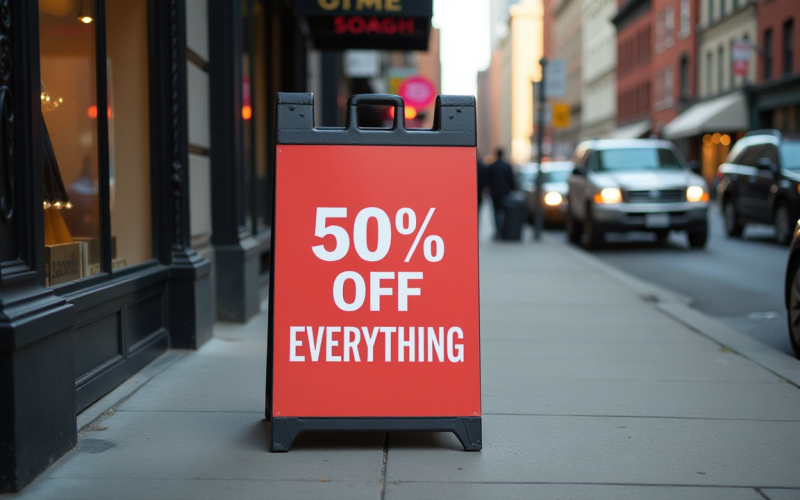For two years, the American consumer has carried the economy.
Even with interest rates at their highest level in two decades, spending kept climbing, job losses never came, and talk of recession faded.
But the latest data and company earnings are clear: the engine is no longer revving.
Although consumers are still spending, they are now doing it differently.
Some big earnings this week offered a rare look at what happens when the single most important force in the US economy starts to change direction.
A slowdown that is starting to stick
The headline numbers leave little room for debate.
Real personal consumption expenditures (PCE) grew just 1.2% annualised in the first quarter of 2025, sharply down from roughly 4% in the final quarter of 2024, according to a report by Deloitte.
Income is slipping, too. According to the Bureau of Economic Analysis, Personal income fell 0.4% in May, disposable income dropped 0.6%, and the savings rate is now just 4.5%.
This is the lowest since 2022, indicating that households are depleting their cash buffers rather than building them up.
While spending remains positive in aggregate, it is softening sharply in discretionary categories.
The data now matches what companies are reporting: households are cautious, selective, and prioritising only what they need.
Inflation and tariffs reshape household priorities
Inflation has cooled to around 2.7% year-over-year, but tariffs remain a potential shock.
A McKinsey survey shows 43% of consumers cite rising prices as their biggest worry, and 29% point directly to tariffs.
This sharp shift in sentiment is changing how households spend.
Consumers are delaying electronics and home goods purchases.
They are trading down to private-label products and buying cheaper “dupes” instead of premium brands, according to The Washington Post.
Even consumer staples are not immune. Procter & Gamble says shoppers are stretching the time between purchases and drawing down pantry stock before buying again.
This indicates a defensive posture from the US consumer.
Lower-income households are feeling it the most. Buy Now, Pay Later usage for groceries has spiked.
In fact, BNPL spend is set to reach record highs, surveys have shown that almost 1 in 4 users are relying on such payment methods to buy essential items.
This is concerning: Annual “Buy Now, Pay Later” (BNPL) transaction volume is expected to reach a record $116.7 billion in 2025. That would be double the 2022 total and 7 times higher than in 2020. BNPL use is exploding as consumers are increasingly searching for ways to borrow
For many, BNPL is no longer about convenience. It’s becoming a way to get by.
Corporate earnings confirm the trend
This past week, three key companies reported their Q2 2025 earnings and revealed some deeper insights into how consumer stress is bleeding into specific sectors.
P&G’s results revealed modest growth, but CFO Andre Schulten flagged a clear trade-down effect.
Shoppers are moving from premium to value products across income brackets.
Tariffs, he warned, could add $1 billion in costs, likely forcing price increases that consumers are already resisting.
PayPal’s earnings offered another angle. CEO Alex Chriss described US spending as “uneven,” with a clear deceleration in goods tied to China-sourced imports that now carry higher tariffs.
Branded checkout growth slowed to 5% from 6% in the prior quarter.
Yet Venmo’s revenue rose 20%, indicating that while goods spending is softening, services and peer-to-peer transfers remain strong.
Visa’s results were more mixed. The company posted 8% payment volume growth and record revenue of $10.17 billion, powered by essential spending and early “pull-forward” purchases to avoid future tariff hikes.
But CFO Chris Suh was clear: this isn’t sustainable. Cross-border growth has already slowed from 14% to 12%, and the company’s cautious guidance reflects the risk that early spending will turn into a late-year drag.
The “two-speed consumer” is here
These results point to a structural split in US consumption.
Affluent households are still spending. Visa and American Express both show resilient card volumes, largely in essentials and in preemptive tariff-driven purchases.
But middle- and lower-income households are pulling back, trading down, and increasingly financing even basic goods.
This divergence explains why P&G can report weaker volumes while Visa still posts strong payments growth.
They are tracking the same economy, but two very different realities.
Generational differences add another layer. Gen X, now at peak earning power, remains a major spending force, particularly in categories like food, alcohol, and household staples.
Younger consumers, burdened by rent and slower income growth, are far more exposed to the pressures of tariffs and shrinking savings.
Forward outlook: from resilience to a controlled slowdown
If consumer spending was the engine holding the US economy up, that engine is about to downshift.
Front-loaded spending will fade. Visa’s “buy now to beat tariffs” effect will likely turn into weaker sales in Q3 and Q4, particularly in retail categories hit hardest by trade policy.
Income compression is the real risk. Historically, a 1% drop in disposable income reduces discretionary spending growth by roughly 0.7 percentage points, based on BEA data from 2010–2023.
With income already falling in May, the pressure is building.
Tariffs will not ease that strain. Unlike inflation, they are policy-driven and disproportionately hurt lower-income households.
That will deepen the divide between resilient high-income card spenders and stressed low-income consumers increasingly dependent on BNPL.
Base case: A cooling to 2–2.5% consumer spending growth by Q4 2025.
Downside risk: 1.5% if tariffs escalate or wage growth slows; enough to shave 0.5 to 0.8 points off GDP in early 2026.
Upside tail: Solid labour markets could keep a floor under spending, but any rebound will be narrow and limited to the top end of the income spectrum.
The June personal income and PCE report will be released on July 31, 2025, which is set to offer more data on how US consumers are feeling.
If the current trend hardens, the slowdown will not stay contained to retail, but it will move straight into growth itself.
The post Consumer spending in the US is slowing – Is the economy in trouble? appeared first on Invezz


